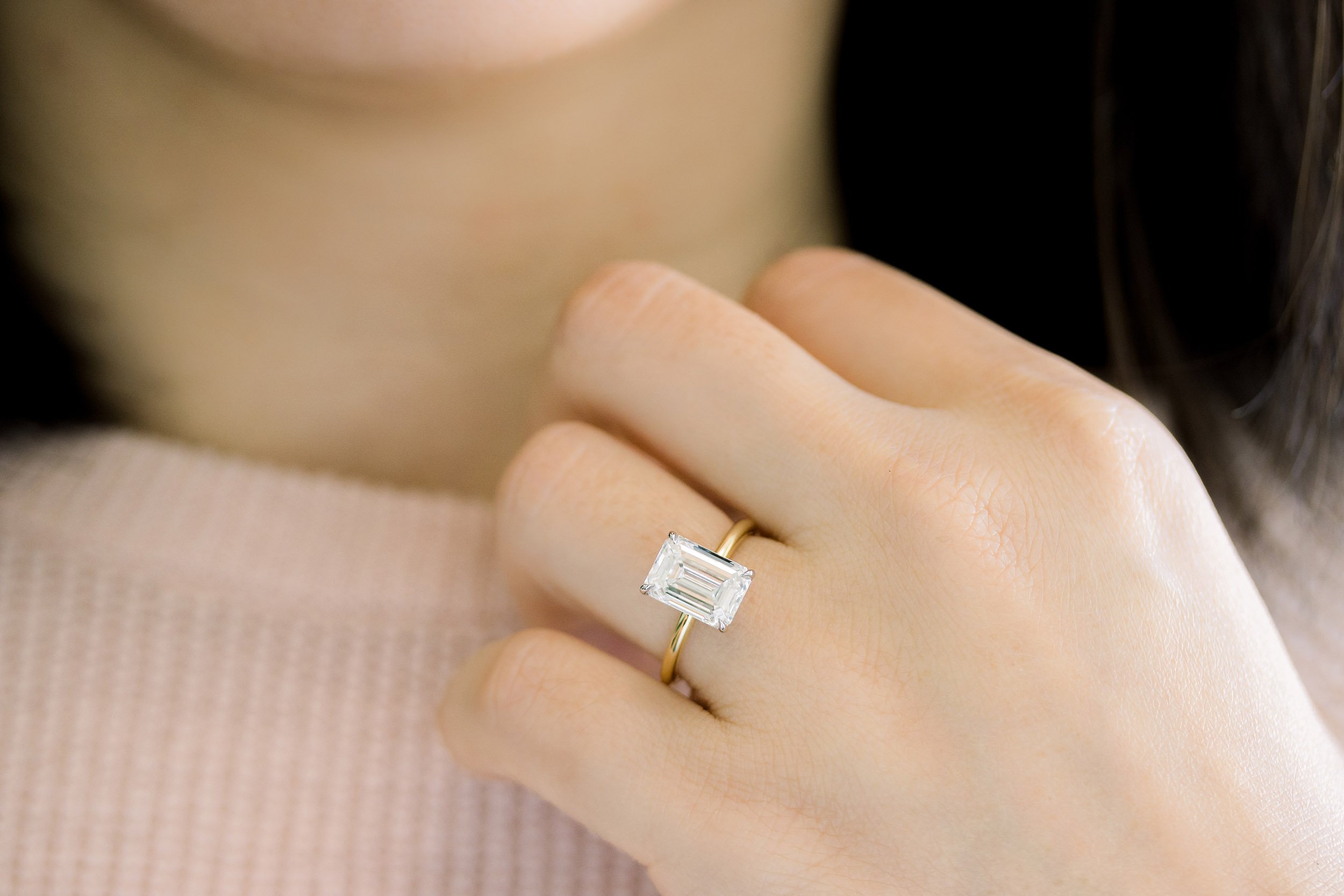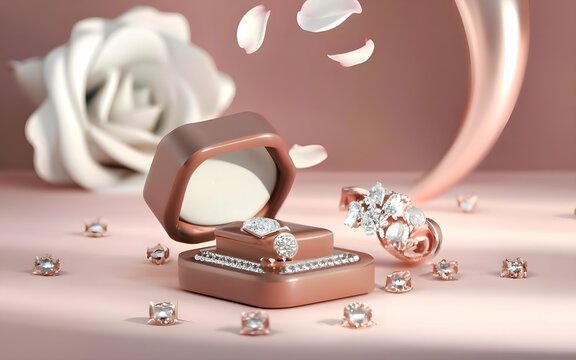Table of Contents
Introduction
Lab diamonds, also known as synthetic diamonds, are created in controlled laboratory environments using advanced technological processes. These diamonds are chemically, physically, and optically identical to natural diamonds. Their growing popularity is due to ethical sourcing, cost-effectiveness, and environmental sustainability.
Importance of Diamond Cuts
The cut of a diamond significantly influences its brilliance, sparkle, and overall aesthetic appeal. A well-cut diamond can enhance the gem’s natural beauty, making it a crucial factor in the buying decision.
History of Diamond Cutting
Early Diamond Cuts
The history of diamond cutting dates back to the 14th century, with the development of simple cuts like the point cut and table cut. Early techniques were rudimentary, focusing more on retaining carat weight than enhancing brilliance.
Evolution of Cutting Techniques
Over the centuries, labordiamanten schliffs techniques have evolved significantly. The introduction of the rose cut in the 16th century and the brilliant cut in the 17th century marked significant advancements. Modern cutting techniques employ sophisticated tools and precision to maximize a diamond’s brilliance.
Types of Lab Diamond Cuts
Round Brilliant Cut
The round brilliant cut is the most popular diamond cut, known for its exceptional brilliance and fire. It features 58 facets, including a table, crown, girdle, and pavilion.
Cushion Cut
Characteristics
The cushion cut, also known as the pillow cut, has rounded corners and larger facets. It blends a vintage feel with modern sparkle, making it a popular choice for engagement rings.
Pros and Cons
- Pros: Classic look, good brilliance, and hides inclusions well.
- Cons: Less brilliance compared to round cuts and can appear smaller than other cuts of the same carat weight.
Emerald Cut
Characteristics
The emerald cut is a rectangular shape with step cuts and a large open table. It emphasizes clarity over brilliance, offering a unique and sophisticated look.
Pros and Cons
- Pros: Elegant appearance, highlights diamond clarity, and elongates fingers.
- Cons: Less sparkle and shows inclusions more prominently.
Asscher Cut
Characteristics
Similar to the emerald cut, the Asscher cut is square with step cuts and cropped corners. It combines vintage charm with modern precision.
Pros and Cons
- Pros: Unique vintage look, good clarity, and symmetry.
- Cons: Less brilliance and can appear smaller due to deep cut.
Radiant Cut
Characteristics
The radiant cut combines the elegance of the emerald cut with the brilliance of the round cut. It features a rectangular or square shape with cropped corners and multiple facets.
Pros and Cons
- Pros: Excellent brilliance, durable shape, and versatile.
- Cons: May require more cleaning to maintain sparkle and can be more expensive.
Oval Cut
Characteristics
The oval cut offers a similar brilliance to the round cut but with an elongated shape. It creates an illusion of greater size and elongates the finger.
Pros and Cons
- Pros: High brilliance, larger appearance, and unique shape.
- Cons: Can show a “bow-tie” effect (dark area in the center) and may require careful setting.
Marquise Cut
Characteristics
The marquise cut, or navette cut, has a distinctive elongated shape with pointed ends. It maximizes carat weight and creates a dramatic, elegant appearance.
Pros and Cons
- Pros: Appears larger than other cuts, elongates fingers, and is eye-catching.
- Cons: Prone to chipping at points and can show a “bow-tie” effect.
Pear Cut
Characteristics
The pear cut, or teardrop cut, combines the round and marquise shapes with a single point and a rounded end. It offers a unique and elegant look.
Pros and Cons
- Pros: Unique shape, versatile in settings, and elongates fingers.
- Cons: Prone to chipping at the pointed end and can show a “bow-tie” effect.
Heart Cut
Characteristics
The heart cut is a symbol of love, diamanten 4Cs, featuring a distinctive heart shape with a cleft at the top. It is a romantic and unique choice for engagement rings.
Pros and Cons
- Pros: Symbolic shape, unique, and eye-catching.
- Cons: Requires precise cutting for symmetry and less brilliance than round cuts.
Factors Influencing the Quality of a Diamond Cut
Proportion
The proportion of a diamond refers to the relationship between its various parts and how they interact with light. Ideal proportions maximize brilliance and fire.
Symmetry
Symmetry involves the alignment and balance of a diamond’s facets. High symmetry ensures that light reflects evenly, enhancing the diamond’s sparkle.
Polish
The polish quality of a diamond affects its surface smoothness. A well-polished diamond will have a brilliant surface with fewer blemishes.
How Lab Diamonds Are Cut
Cutting Process
The cutting process for lab diamonds involves several steps: planning, cleaving or sawing, bruting, and faceting. Each step requires precision to maximize the diamond’s brilliance and carat weight.
Advanced Technology
Modern diamond cutting employs advanced technologies like laser cutting and computer-aided design (CAD) to achieve precision and minimize waste.
Choosing the Right Cut for Your Lab Diamond
Personal Preferences
Choosing a diamond cut is a personal decision influenced by style, symbolism, and practical considerations like durability and setting compatibility.
Budget Considerations
Different cuts can vary significantly in price. Round cuts tend to be more expensive due to higher rough diamond wastage, while other shapes like princess and cushion cuts offer more value per carat.
Setting Compatibility
The setting can enhance or detract from the diamond’s appearance. For example, a solitaire setting emphasizes the diamond, while a halo setting can enhance its brilliance and size.
Common Myths About Diamond Cuts
Myth 1: All Diamond Cuts Are Equally Sparkly
Different cuts interact with light in unique ways, affecting their sparkle. The round brilliant cut, for example, is known for its exceptional brilliance, while step cuts like emerald and Asscher have less sparkle.
Myth 2: More Facets Always Mean More Brilliance
While more facets can enhance a diamond’s brilliance, the overall cut quality, proportions, and symmetry play a more significant role in determining its sparkle.
Myth 3: Lab Diamonds Are Inferior to Natural Diamonds
Lab diamonds are chemically and physically identical to natural diamonds. The main differences lie in their origin and environmental impact.
Benefits of Lab Diamonds
Ethical Sourcing
Lab diamonds are free from the ethical concerns associated with mined diamonds, such as conflict funding and poor labor practices.
Environmental Impact
Producing lab diamonds has a lower environmental impact compared to traditional mining, which involves significant land disruption and resource consumption.
Cost-Effectiveness
Lab diamonds typically cost 20-40% less than natural diamonds, making them a more affordable option without compromising on quality.
Challenges and Considerations
Market Perception
While lab diamonds are gaining acceptance, some consumers still prefer natural diamonds due to tradition and perceived value.
Resale Value
Lab diamonds currently have a lower resale value compared to natural diamonds, which can be a consideration for investment-minded buyers.
Availability and Variety
As technology advances, the variety and availability of lab diamond cuts continue to grow, offering more choices for consumers.
Recent Innovations in Lab Diamond Cutting
Advanced Laser Cutting
Laser cutting technology allows for greater precision and intricate designs, enhancing the quality and variety of diamond cuts available.
Custom Cuts
Consumers can now order custom-cut lab diamonds tailored to specific preferences, providing unique and personalized options.
Future Prospects
Increased Acceptance
As awareness grows, lab diamonds are expected to gain broader acceptance and popularity, particularly among younger, environmentally-conscious consumers.
Technological Advancements
Ongoing advancements in diamond cutting technology will continue to improve the quality and variety of lab diamonds, making them more competitive with natural diamonds.
Expert Insights
Gemologist Perspectives
Leading gemologists highlight the importance of cut quality in determining a diamond’s beauty and value. They recommend prioritizing cut over other factors like carat weight and clarity.
Jewelry Designer Views
Top jewelry designers emphasize the versatility and ethical appeal of lab diamonds, noting their increasing use in high-end and custom jewelry pieces.
Conclusion
Summary of Key Points
Choosing the right cut for a lab diamond involves understanding the different cuts available, considering personal preferences and budget, and recognizing the ethical and environmental benefits of lab diamonds.
Call to Action
For those considering purchasing a diamond, exploring lab diamond options can offer a high-quality, cost-effective, and ethically sound alternative to natural diamonds.





